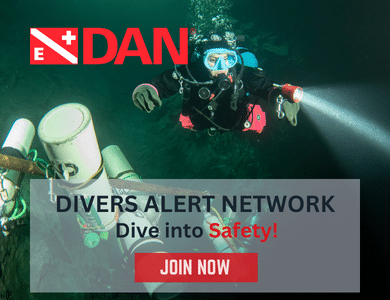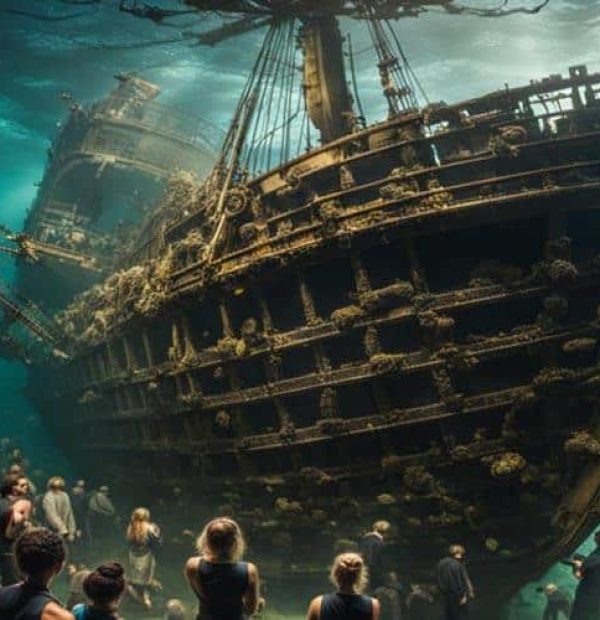Friday, 10 May 2024
Menu

As it turns out, during such a pleasant and relaxing activity as snoorklowanie, there are also many fatal accidents. It happens both when we swim with a full-face mask and with a classic ABC. Fortunately, everything is in our hands and with proper preparation, we can prevent them!
When using sports equipment, whether for diving, snoorkling or anything else, it is important to remember to follow the safety rules. Decathlon has been raising awareness among its customers for a long time and, after purchasing snoorkling equipment, has passed on detailed safety rules written by AKP “Krab” especially for them:
We have included them below so that everyone can familiarise themselves with them. Finally, we would like to remind you that common sense and adequate protection are the most important things in every sport!
Safety rules for snorkelling:
The basic equipment for diving, which is a snorkel, mask and fins (the so-called ABC) gives us a pass to the underwater world. However, we must not forget that water is an alien environment for our organism. There are various dangers lurking in front of us, of which it is worth to be aware in order to make our stay on holidays safe, and peeping into the underwater world will leave only nice memories.
Not always at the hotel guarded bathing site you will find a wealth of underwater life, a reef and clean water. If you decide to swim outside the bathing site, you have to take care of your own safety (which does not mean that you are completely safe in guarded bathing sites, or at least in designated ones). Life or health will not be returned to us. You cannot count on a lifeguard without limitation, and at designated unguarded bathing sites there will be a scooter more than once in the season.
Check that it is not a shipping lane, harbour entrance, marina, etc. Check that swimming is not prohibited there. Make sure there are no signs warning of local dangers (e.g. possibility of strong currents, tide preventing going ashore, etc.).
2. entering and leaving the water: Make sure it is safe to enter the water and that you will be able to leave the water the same way, despite being very tired. Will you be able to find the spot easily – is it visible from the water? Are there other places nearby with easy access to the shore? If the weather changes, will it be possible to get out? (e.g. an easy exit over the rocks may not be possible when the weather breaks and the waves come in).When taking the boat out to a nearby reef, check if it is possible to enter it from the water.
Water currents, waves: Sea currents are very dangerous and can sweep a snorkeller away. They can be particularly strong in calm seas. The absence of waves often puts us off our guard. If you notice (feel) a light current, do not snorkel in such a place. Look for bays, secluded sides of larger reefs, etc. The current may appear or intensify in the straits, between reefs, islands, etc. If it starts to carry us away, look for a shelter from it near the rocks or reefs. There, the pull of the water will be less than in the middle between reefs/islands.
Waves: When the sea is rough, we do not enter the water. Waves make it difficult or impossible to get out of the water, not only on the rocky shore. They make swimming very difficult, can lead to flooding of the mask, snorkel, loss of ABCs (snorkel, mask, fins), drowning, stunned by a blow, problems with the thorax, seasickness (vomiting). They are often accompanied by a current of water. It is easy to get drifted in these conditions.
5. Water safety: Do not swim outside designated swimming areas without an orange signal buoy of at least 5 L. The buoy should be visible from a distance of several hundred metres. A person in the water is hardly visible to watercraft (motorboats, sailboats, scooters, etc.). Avoid areas where such craft are operating. Stay away from buoys.
When swimming outside of guarded swimming areas, always be mutually assisted with your partner (snorkel in pairs) or under the direct supervision of a person on a boat (if you are swimming further away from the boat – always in pairs). Never swim alone.
7 Breathing: During snorkelling you breathe naturally as on a hike, the difference being that you breathe through your snorkel (mouth) when swimming with a standard ABC or through your nose with an Easybreath mask. We do not gasp for air, we do not hold air while inhaling, we do not breathe quickly (hyperventilate) – such breathing leads to the accumulation of excess carbon dioxide (CO2) in the blood and lowers oxygen (O2) levels. Both high CO2 levels and low O2 levels are a simple route to unconsciousness. If the physical exertion of snorkelling forces you to breathe harder, change to a calmer place or go out on the shore/boat and rest.
8. dizziness, nausea: If you feel these in the water, immediately inform your partner of the symptoms and stop swimming. If you feel similar symptoms on land, do not enter the water. Never enter the water on an empty stomach; a drop in sugar levels can cause unconsciousness without any symptoms preceding it.
9. cramp (mostly in the calves, sometimes in the metatarsals): A common complaint among people who have not been swimming for a long time (more than a few weeks) or who have not had fins on their feet for a long time. Only regular pool training will allow us to fully enjoy snorkelling on holiday. Magnesium intake is no substitute for training. Cramp is not a shark, it does not kill and you should not panic because of it. If you don’t manage to free your leg from a cramp by stretching it in the water, you can always swim to shore using only your arms and the other leg.
Dangerous animals: Snorkelers are most at risk of limb punctures from sea urchins, which hide from the light under rocks during the day in warm seas. Burns from anemones and some coral species are common. Beware of jellyfish and their long parasols. Venom spike punctures by some fish species are less common. Avoid walking and waving hands while swimming. Do not touch anything on the reef.
11. losing fins:A well-fitting fin shouldn’t fall off, but… A fin strap breaking, slipping, or a calliope falling off can rob you of your main propulsion. Are you a good enough swimmer to return to shore/boat without fins? Despite a wave, sometimes a slight current of water? Always consider returning without fins and limit your snorkel area accordingly to your swimming ability.
It is easy to break the feathers of the fins, and it is easy to fall over in the fins. If you have to walk in them, it is easier to walk backwards (especially in water) taking care not to trip over a stone or the like. It is not allowed to stand on the fins in the water (some people unconsciously try to stand higher this way), the fins then bend excessively, losing their elasticity or breaking. Broken fin while snorkelling = return to shore/boat without propulsion similar to losing a fin.
13. Loss of snorkel mask: Do not pull the mask off your face while in the water. Do not wear it on your forehead. It can easily fall off. Return to shore or boat on your back + visit to local dive shop, price in Euro
14 Pressure injuries: In water, pressure increases by 1 atmosphere for every 10 m of water column. It is necessary to equalize pressure when submerged in ABC equipment, otherwise various injuries may occur. It is necessary to equalize pressure in e.g.: in the middle ear (with the risk of perforation of eardrum, already at 2 m you will feel a strong sting in the ear), sinuses and in the mask. Not all masks have the possibility of pressure equalization, therefore it is not allowed to dive under the water surface in them. This will cause pressure injuries to the face and eyes. The Easybreath mask is not designed for immersion as it is not pressure equalizing. Remember this and never dive in it! Diving while holding your breath has many risks not discussed in this article. If you plan to dive while holding your breath, you need to deepen your knowledge, preferably under the guidance of a scuba or freediving instructor.
15. medical check-up: have a medical check-up at least once a year, preferably before the season. Think of it as a compulsory registration check-up. ECG, blood pressure, ESR, blood count, an important chest x-ray and a visit to the doctor. Water is no joke, remember we are entering an environment that is foreign to us. Physical exertion, hyperventilation, a slight wave… you can lose consciousness.
16. physical condition: no less important than the examination is your cardio-respiratory fitness and your ability to swim. In winter you should go to a swimming pool at least once a week. In larger cities you will find scuba clubs, it is worth to ask about fitness classes at the pool. Under the watchful eye of a scuba instructor, you’ll learn to swim properly in the ABC and not only snorkel, but also dive safely while holding your breath. (In Krakow, I recommend training in the Krabi at the pool of TS Wisla).
Think about taking a thin (2 mm) wetsuit. It will allow us to enjoy the underwater world longer without chilling our bodies, especially when the water is below 25°C. It also provides protection against abrasions on rocks or reefs. It is also necessary to wear a thin cap or a swimming cap after swimming to protect the sinuses and ears from swelling and subsequent problems.
Copyright © AKP Krab AGH 2013 – 2018
Source: krab.agh.edu.pl










Welcome to DIVERS24.COM, your daily source of scuba news, freediving, scuba diving information, and equipment reviews. Our comprehensive coverage of the dive industry from A to Z provides you with all the latest scuba news, training updates, underwater photography tips, and everything else related to scuba diving. Whether you’re a beginner or an experienced diver looking for more knowledge about scuba gear or techniques – we’ve got it covered! With our in-depth articles written by experienced divers who have been there and done that, you are sure to find exactly what you need here at Divers24.com. Dive into scuba news today!
Underwater Media Sp. z o.o.
Szafarnia 11/F8,
80-755 Gdansk, Poland
Welcome to DIVERS24.COM, your daily source of scuba news, freediving, and scuba diving information. Sign in for a weekly news update and discount coupons for dive gear and apparel.
@2023 - underwatermedia.pl. All Right Reserved. Designed and Developed by Tworzenie stron internetowych Gdansk

The Divers24 portal is currently the largest online medium treating diving in Poland. Since 2010 we have been providing interesting and important information from Poland and around the world on all forms of diving and related activities.
Contact us: info@divers24.com